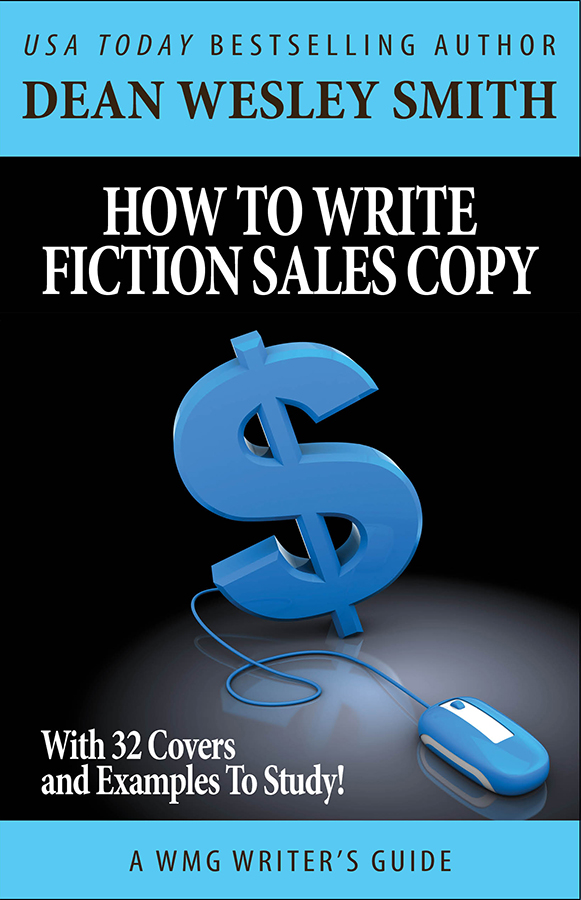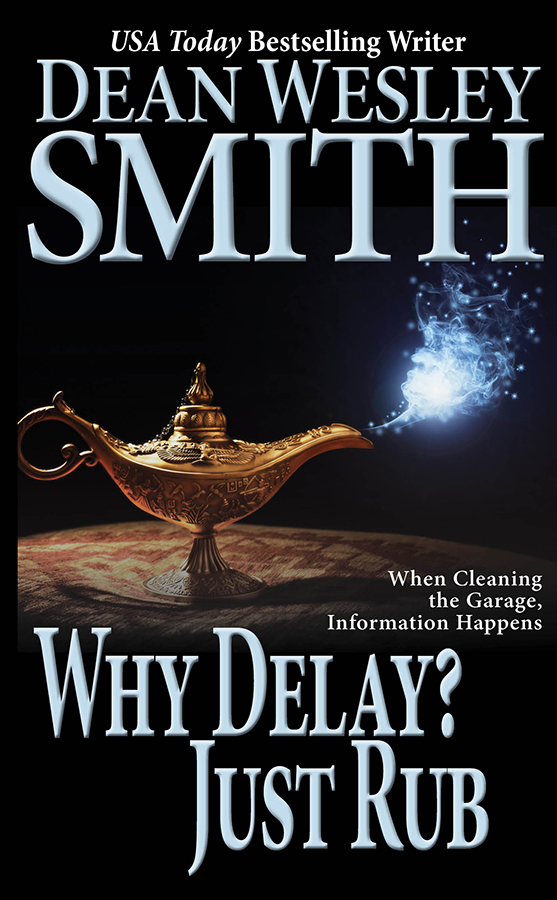How to Write Fiction Sales Copy: Chapter Five
HOW TO WRITE FICTION SALES COPY
CHAPTER FIVE
(Summary. This book is coming about because I need to write 32 story blurbs for the 32 short stories I wrote in July for a book titled Stories from July.)
In the first chapter of this book, I touched on what I call “The Author Problem” and gave a basic formula that I sometimes use to give blurbs a structure.
And in chapter two I laid out another formula for writing blurbs.
In the third chapter I talked about a method Lee Allred uses.
In the fourth chapter I talked about the idea that sometimes using first lines can help.
So now on to more blurbs and in this chapter I want to talk about how to use setting and focus on one detail as a way around tough sales copy issues.
—-
Why Delay? Just Rub: A Bryant Street Story

Weird things happen on Bryant Street. Even when cleaning a double-car garage.
Late spring, very little sports on television, weather threatening to rain so no golf for Jack. Time to clean out the garage.
Also time to find the old lamp in a pile of garbage. Of course, Jack rubs the lamp to try to clean it.
And on Bryant Street, that means the entire chore of cleaning out a garage snaps into strangeness.
A twisted tale of a man, a wife, and a dirty garage as only can be told on Bryant Street.
—
Another short Bryant Street story that would be ruined if I gave too much away. With the cover I told the plot point of finding an old lamp with a Genie in it, so I could work around that.
Bryant Street, as I said earlier, is a series I have been writing for over forty years. My first writing corporation was named Bryant Street.
Bryant Street is a subdivision street where Rod Serling would be one of the normal residents. I just go from house to house in the subdivision telling strange stories.
So for this blurb, since giving anything away would kill this story, I opened with setting. Cleaning out a garage on Bryant Street.
Paragraph two is a character name with more setting. Just establishing Jack with a couple brush strokes as a simple, normal guy.
Third is a plot point obvious from the cover plus more setting.
Last paragraph functions as a hook with even more about the setting. Then a tag setting line as a fifth paragraph.
Notice that the entire focus of this blurb is setting. All setting with a hint of plot and a one name character. Nothing more.
A focus on the setting that is all in the first two pages is a great way to avoid giving away a plot point in a story that needs to be protected.
Setting. All setting.
Yet another method of writing sales copy for a story.
—
The Stone Slept Here

Jennifer Bends collects stones.
Special stones.
She puts her stones, both of them, on a shelf. No one asks her about the stones because the stones look plain, heavy, pointless.
But the stones contain memories.
Special memories.
And the stones contain a promise that only Jennifer and the stones know.
—
By far the hardest little story I have ever had to blurb. So I did the only thing I could do.
I blurbed the stones.
I put a woman’s name in the first paragraph and said she collects stones.
Special stones. Stand alone to pound home the specialness.
Third paragraph I twist the collection to mean only two stones and that the stones are not normal stones that others would collect, but just plain. The hope is that readers would be puzzled enough to read the story at this point.
Staying focused on the stones, I gave a slight theme point away about the memories in paragraph three. Then repeat the “special” part again.
Then pounded the readers with the focus on the stones again in the last paragraph, bringing back in the character.
Again, only focus on the stones. And since the cover showed the stone with a drop of blood (perfect art for this story) I figured the cover art and the cover blurb and the blurb itself would be a full enough picture without giving anything at all away.
This one was hard, but by focusing only on one element, it allowed the sales copy to not give away anything yet make the story sound interesting on a human level.
So a slightly different way of focusing on only setting to help a blurb. This is focusing on only one element in the setting.
—
An Obscene Crime Against Passion: A Bryant Street Story

James Ward no longer cares what his wife does in her spare time. He no longer cares about anything, actually.
Deborah took his passion over years. Drained him until he could give no more.
But on Bryant Street, sick relationships often reveal hidden secrets.
Passion functions as a food for some, energy for others. But who knows what role passion plays on Bryant Street.
—
The lesson for this chapter is focus. This story is very, very twisted from the second page going onward. (And again the art for this story is flat perfect.) But I wanted to give none of the twists away.
So I had to focus on the theme of the story that was in the title: Passion. And the fact that a simple theme such as passion can be really twisted on Bryant Street.
So first paragraph introduce character, a passionless man.
Second paragraph introduce wife, the person who stole his passion.
Both are identifiable standard characters living in a subdivision.
Then I nail home the Bryant Street aspect in paragraph three as well as the fact that this is a relationship story.
Then in paragraph four I go back to the theme of passion twisted with a Bryant Street reference. And actually, that paragraph gives away some plot, but it is not clear in any fashion, but a reader, after reading the story will understand the double and triple meaning in that last paragraph.
I also purposely put in the “passion play” reference.
I was tempted to call this an urban fantasy story. But decided that actually was too much and that the fantasy elements later in the story weren’t that important compared to the Bryant Street and relationship aspects of this.
Choices. The fun of writing sales copy.
—
Author Problem Check
Did I get into any author problem on any of these three stories? All were difficult because of author problems and because they were all so short. But I think I stayed out of the author problems once again.
Were there any passive verbs in any of the three blurbs? Nope, none that I can see.
Did I once go “and then this happens” with the plot I did reveal? Nope. I basically revealed no real plot on any of these.
I don’t think any had author problems this chapter. But as with the three in the last chapter, all three wanted to have more plot in the blurb. These three this chapter were very, very difficult to do.
But by focusing on a setting or a detail or a feeling, the blurbs stayed in sales and out of plot.
So remember that as a way to deal with writing sales. Focus down. Often that is more than enough.
Onward to more blurbs.
5 Comments
Kate Pavelle
Thanks, Dean, for sharing! This is great. The four-paragraph structure, and especially, the way you work not to tell to much. That’s hard at times – the vile Author Problem. This is so helpful, I already shortened a blurb I’ve been working on!
Peggy
Thanks for the blurbs + explanations, Dean. Reading a lot of them one after the other is very helpful.
Lily Silver
Thank you Dean. These posts are very helpful. I am struggling with rewiting blurbs on some of my older stories. Your examples are making it clearer. One question, I write historical romance, and they are about 90k each. Is it ok to give some Idea of the plot in that case, to give a sense of place and setting or not ok?
dwsmith
Place and setting, yes, Lily. Critical with historical. And run that place and setting through your two characters. The say what the book is about. (A rip-roaring romance that cuts it way across the European society…) But caution on plot. That’s why readers read the book is to be in the story (the plot).
You have to have some, minor amount, yet. Set up is the best if you feel you have to put in any. Nothing past the first couple chapters.
lily Silver
Thanks, that does make it firmer in my mind.